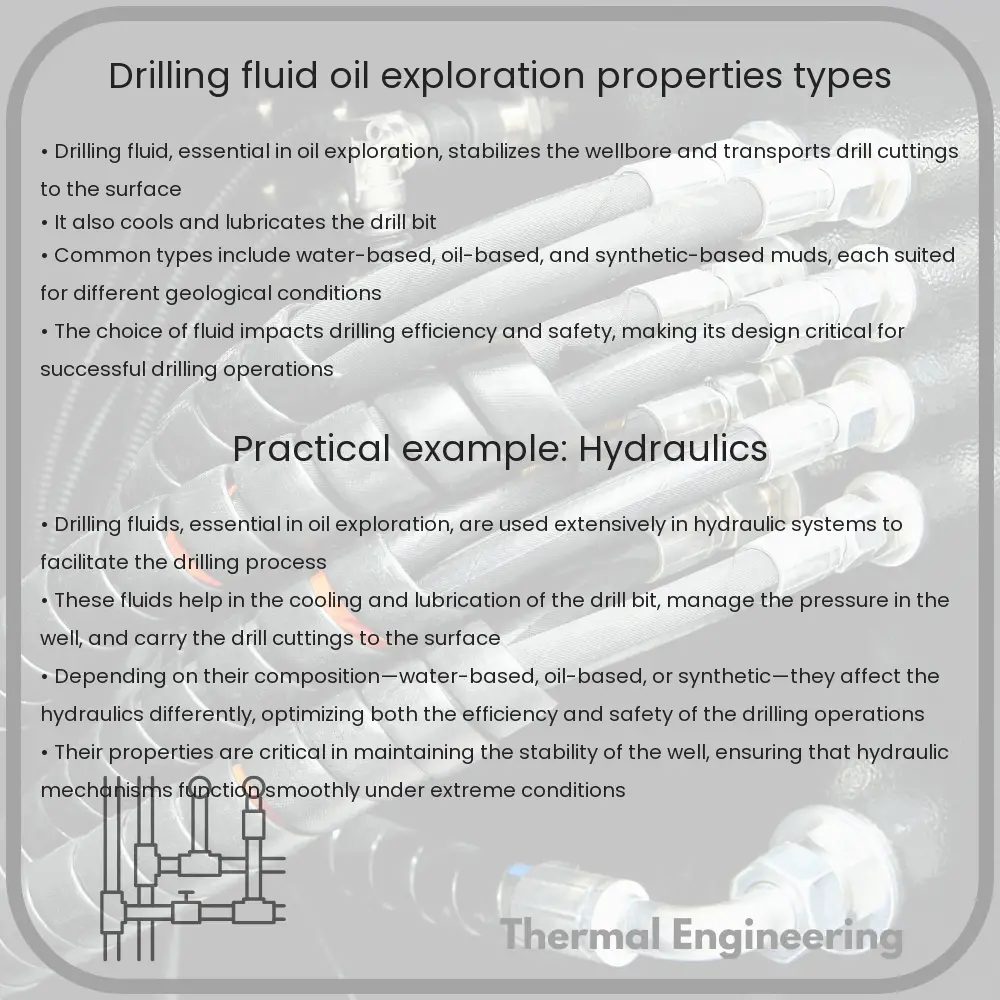Learn about drilling fluids, essential for oil and gas exploration, their types, properties, and environmental considerations.

Introduction to Drilling Fluids in Oil Exploration
Drilling fluids, also known as drilling muds, play a crucial role in oil and gas exploration. These specialized fluids are used in drilling operations to facilitate the drilling of boreholes into the earth. The primary functions of drilling fluids include removing cuttings from the drill bit, controlling formation pressure to prevent blowouts, cooling and lubricating the drilling bit and assembly, and supporting the stability of the wellbore.
Properties of Drilling Fluids
The effectiveness of a drilling fluid in fulfilling its functions is largely determined by its properties. These include:
- Viscosity: A fluid’s resistance to flow, which affects its ability to carry drill cuttings to the surface.
- Density: Measured in pounds per gallon (ppg), density helps to balance formation pressures to prevent well collapse or blowouts.
- pH: The acidity or alkalinity of the fluid, which is crucial for minimizing corrosion of equipment and controlling the solubility of minerals.
- Filtration: The ability of the drilling fluid to form a filter cake that seals porous formations to prevent fluid loss.
- Lubricity: Reduces friction between the drill string and the sides of the wellbore, crucial in preventing stuck drill strings.
- Thermal Stability: The ability to maintain performance under high temperature conditions encountered in deep wells.
Types of Drilling Fluids
There are three main types of drilling fluids, categorized by their base material:
- Water-Based Muds (WBM): The most common type, these fluids use water as the continuous phase. WBMs are preferred for their cost-effectiveness and ease of use. They can be further classified based on the type of clay used (bentonite is the most common) and other additives that control viscosity, weight, and stability.
- Oil-Based Muds (OBM): Using oil as the base fluid, OBMs are more suitable for drilling operations that involve high temperatures or complex geological formations. They provide better lubrication and are more stable chemically, but are also more expensive and pose greater environmental risks.
- Synthetic-Based Muds (SBM): SBMs use synthetic oils, which are engineered to have the beneficial properties of OBMs but with less environmental impact. They offer similar performance in terms of stability and lubrication and are often used in environmentally sensitive drilling operations.
Environmental Considerations
The choice of drilling fluid involves balancing performance with environmental impact. WBMs are generally more environmentally friendly but may not perform well in certain conditions. OBMs and SBMs, while offering improved operational capabilities, can have higher environmental impacts due to their oil content, making proper disposal and treatment critical. Innovations in fluid technology continue to seek ways to enhance efficiency while reducing environmental footprints.
Conclusion
Drilling fluids are a fundamental aspect of oil exploration, critical to the success and safety of drilling operations. The development and optimization of drilling fluids continue to be a focus in the oil and gas industry, aiming to enhance performance and minimize environmental impacts. Understanding the different types of drilling fluids and their properties helps in selecting the right fluid for specific drilling conditions and environmental considerations.